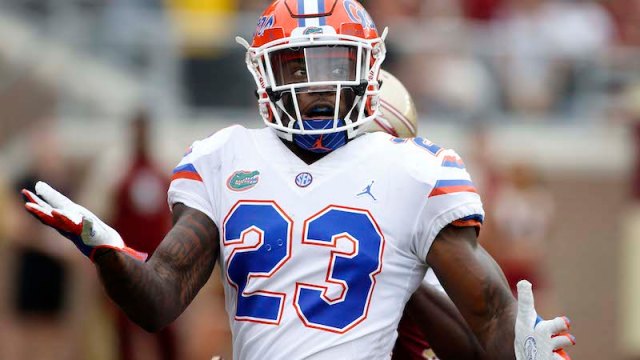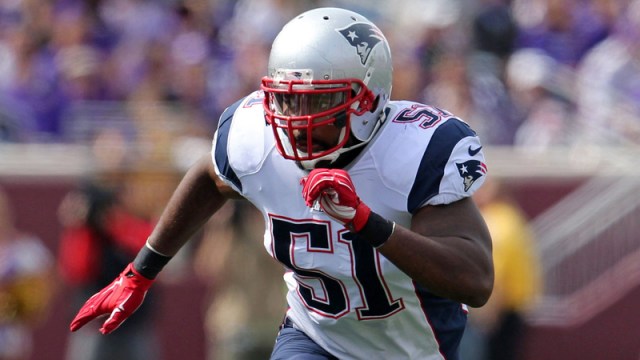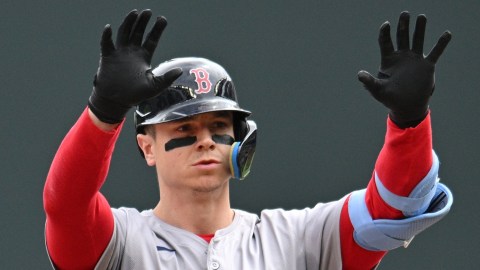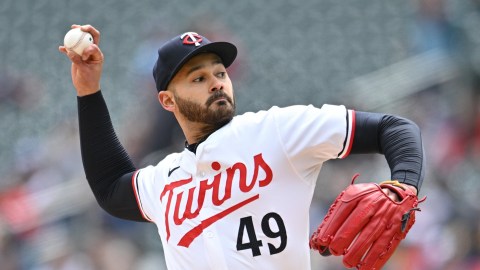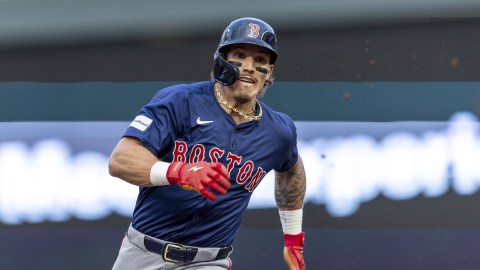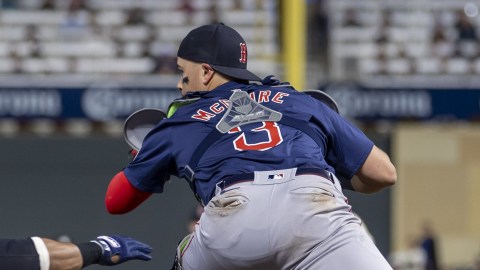There’s a reason no one in Major League Baseball wants to take their hacks against Chris Sale.
The Boston Red Sox pitcher is one of the most feared hurlers in the sport, according to his peers, which isn’t some great revelation. Sale’s numbers speak for themselves, and the lanky left-hander has never been a comfortable at-bat for anyone.
But Sale’s physical frame and imposing delivery are only part of the reason he’s so effective. You also have to, you know, execute the pitches, and few pitchers in baseball do so at a higher level or more frequently than Sale.
We know that because of what our eyes tell us, but in this statistical revolution within baseball, we also have data to reinforce what our eyes see. Fantasy baseball expert Alex Chamberlain compiled a leaderboard based on MLB’s Statcast data that breaks down every pitcher’s arsenal by pitch with advanced stats.
Using the leaderboard, we set out to find the most dominant pitches among the Red Sox pitching staff, and unsurprisingly, Sale led the way.
Based on 2018 data, here are the Red Sox’s most dominant pitches based on FIP (fielder independent pitching), wOBA (weighted on-base average), strikeout percentage and swing-and-miss percentage.
CHRIS SALE’S SLIDER
0.20 FIP
.154 wOBA
52.6 K%
17.95 percent swing and miss
According to the pitch-usage stats, Sale used the slider more than 800 times in 2018, equating for exactly 1/3 of his pitches — and why not? If it’s not the best slider in the game, it’s on a very, very short list. On multiple occasions, Sale has used the 80 mph slider to get swings and misses on pitches that either hit or come close to hitting the back foot of right-handed batters. Like Manny Machado on the deciding pitch of the World Series, for instance.
MATT BARNES’ CURVEBALL
0.74 FIP
.189 wOBA
43.9 K%
18.0 percent swing and miss
Barnes’ curveball is a legitimate weapon for the 2011 first-round pick, as he showed in the playoffs last season during one stretch in which he featured the deuce on 15 of 18 pitches. That’s been consistent (albeit extreme) with a usage rise for Barnes since making his big league debut in 2015. He used the pitch more than ever last season, embodying one of the Red Sox’s core pitching principles of working up in the zone with a fastball to set up the spike breaking pitch — in this case, the curveball — down in the zone. With Barnes, the question remains command and control, but if he starts throwing strikes on a consistent basis, he certainly has the stuff to be the closer on a World Series contender.
RYAN BRASIER’S FASTBALL
1.25 FIP
.144 wOBA
30.0 K%
12.4 percent swing and miss
When Brasier debuted in the big leagues in 2013, he was throwing his four-seam fastball in the low- to mid-90s. Upon returning from a stint in Japan during the 2017 season, Brasier caught on with the Red Sox thanks to a fastball that consistently sat in the mid- to upper-90s, routinely sitting in the 97 mph neighborhood. It’s straight but heavy, and a solid slider keeps hitters honest.
EDUARDO RODRIGUEZ’S CUTTER
2.17 FIP
.242 wOBA
29.6 K%
7.3 percent swing and miss
The changeup might technically be Rodriguez’s best pitch, but the cutter — a relatively new addition — is downright filthy when Rodriguez is at his best. The left-hander threw just 80 cutters in 2017, and that number skyrocketed to 477 in 2018. While the pitch didn’t get a ton of swings and misses, it certainly induced plenty of weak contact. Again, a lot of it comes down to command, but if Rodriguez can throw that pitch with conviction, it could be the key to him finally taking the next step and being the pitcher everyone thinks (or hopes) he can be.
NATHAN EOVALDI’S SPLITTER
2.88 FIP
.305 wOBA
28.4 K%
12.6 percent swing and miss
When it comes to Eovaldi, you can really take your pick. He can dial it up as high as 100 mph with a pair of pretty solid breaking pitches, but we’re going to focus on the splitter here. When he needs a swing and miss, he usually leans on either the gas or changes looks with this spit that gets up there at “only” 90 mph. It’s especially tough on left-handed hitters with the bottom falling out, and with Eovaldi staying in Boston as a starter, perhaps we’ll see an uptick from the 13 percent usage rate from a year ago.

